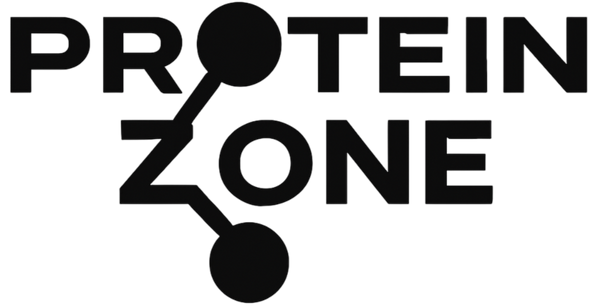Advanced Hydration Formula - Matcha Flavor
Green tea has been treasured across Asia for over a thousand years, from the temples of Japan to the teahouses of China. Known for its refreshing taste and balancing properties, it represents clarity, focus, and calm energy. Matcha Green Tea Hydration draws on this tradition, blending the clean flavor of matcha with a modern hydration formula built to support energy, endurance, and daily performance.
At its foundation, a B-Vitamin Complex (B1, B2, B3, B6, B9, B12, and Pantothenic Acid) works in synergy to unlock energy at the cellular level, support neurotransmitter balance, and maintain healthy metabolism. This group provides essential cofactors for mental sharpness and physical stamina.
To replace what’s lost through activity and sweat, key electrolytes—calcium, magnesium, sodium, and potassium— restore balance, promote hydration, and help maintain steady muscle and nerve function. Together, they form the backbone of endurance and recovery.
The flavor is brightened with natural citric acid and enhanced by natural and artificial flavors, while sucralose delivers sweetness without sugar. A fruit and vegetable blend provides natural color, ensuring the finished mix is as clean in appearance as it is in formulation.
The result is a modern hydration solution inspired by an ancient tradition—refreshing matcha character, combined with functional electrolytes and essential vitamins to fuel both body and mind.
These statements have not been evaluated by the Food and Drug Administration. This product is not intended to diagnose, treat, cure, or prevent any disease.
Purchase Advanced Hydration Formula HERE
DETAILED INGREDIENT LIST
THIAMIN (VITAMIN B1, as Thiamine HCl)
Introduction & History: First discovered in the early 20th century, thiamin was identified as the nutrient preventing beriberi, one of the earliest vitamin deficiency diseases described.
Molecular Function & Mechanism: Acts as a coenzyme in carbohydrate metabolism, helping cells convert glucose into energy and supporting nerve conduction.
Modern Use & Theory: Supplemented to reinforce steady energy production, especially during active or high-stress days.
RIBOFLAVIN (VITAMIN B2)
Introduction & History: Isolated from milk in the early 1900s, riboflavin is notable for its yellow coloration and central role in metabolism.
Molecular Function & Mechanism: Precursor to FAD and FMN, two essential cofactors in mitochondrial energy production.
Modern Use & Theory: Commonly used to support energy, skin and eye health, and antioxidant recycling in multi-nutrient formulas.
NIACIN (VITAMIN B3)
Introduction & History: Linked to the prevention of pellagra, niacin was one of the first vitamins tied directly to human survival.
Molecular Function & Mechanism: Integral to the NAD and NADP enzyme systems, which fuel hundreds of metabolic reactions including energy generation and DNA repair.
Modern Use & Theory: Included for cardiovascular and neurological support, and to maintain overall energy balance.
VITAMIN B6 (as Pyridoxine HCl)
Introduction & History: Identified in the 1930s, Vitamin B6 quickly became recognized for its critical role in amino acid and neurotransmitter metabolism.
Molecular Function & Mechanism: Functions as a coenzyme in neurotransmitter synthesis (serotonin, dopamine, GABA) and hemoglobin production.
Modern Use & Theory: Used for energy, mood balance, and nervous system support.
FOLATE (VITAMIN B9)
Introduction & History: Named for the Latin word “folium,” meaning leaf, folate was first recognized in leafy greens and later linked to DNA synthesis.
Molecular Function & Mechanism: Supports methylation, DNA and RNA synthesis, and red blood cell formation.
Modern Use & Theory: Commonly included to promote cardiovascular, cognitive, and prenatal health.
VITAMIN B12 (as Methylcobalamin)
Introduction & History: Discovered in the mid-20th century as the nutrient preventing pernicious anemia.
Molecular Function & Mechanism: Essential for neurological function, red blood cell formation, and homocysteine metabolism.
Modern Use & Theory: Often used for cognitive clarity and energy, especially in plant-based diets where deficiency risk is higher.
PANTOTHENIC ACID (VITAMIN B5, as D-Calcium Pantothenate)
Introduction & History: Named from the Greek “pantothen,” meaning “from everywhere,” due to its wide distribution in foods.
Molecular Function & Mechanism: Precursor to coenzyme A, required for fatty acid metabolism and energy generation.
Modern Use & Theory: Taken to support adrenal health, stress response, and energy resilience.
CALCIUM (as Calcium Citrate)
Introduction & History: Known since antiquity as the building block of bones and teeth.
Molecular Function & Mechanism: Plays a role in bone mineralization, nerve transmission, muscle contraction, and enzyme activity.
Modern Use & Theory: Included in hydration blends to maintain bone health and muscular performance.
MAGNESIUM (as Magnesium Citrate)
Introduction & History: Recognized in the 19th century for its importance to neuromuscular stability.
Molecular Function & Mechanism: Cofactor in over 300 enzymatic reactions, including ATP production, nerve signaling, and muscle relaxation.
Modern Use & Theory: Taken to reduce cramps, improve sleep quality, and support energy metabolism.
SODIUM (as Sodium Citrate)
Introduction & History: Used for centuries as a salt and electrolyte source.
Molecular Function & Mechanism: Maintains fluid balance, nerve conduction, and muscle contractions.
Modern Use & Theory: Replenished in hydration supplements to replace sweat loss and sustain endurance.
POTASSIUM (as Potassium Citrate)
Introduction & History: Essential mineral identified in the 19th century for its cardiovascular and muscular importance.
Molecular Function & Mechanism: Regulates fluid balance, nerve impulses, and muscle contractions.
Modern Use & Theory: Included to support hydration, cardiovascular function, and reduce exercise-related fatigue.
OTHER INGREDIENTS (Flavor & Stability)
Polydextrose, Citric Acid, Natural & Artificial Flavors, Sucralose, Calcium Silicate, Fruit & Vegetable Blend (for color).
These components ensure brightness, sweetness without sugar, natural coloration, and smooth mixing, while maintaining a clean, stable, and consistent formula.
